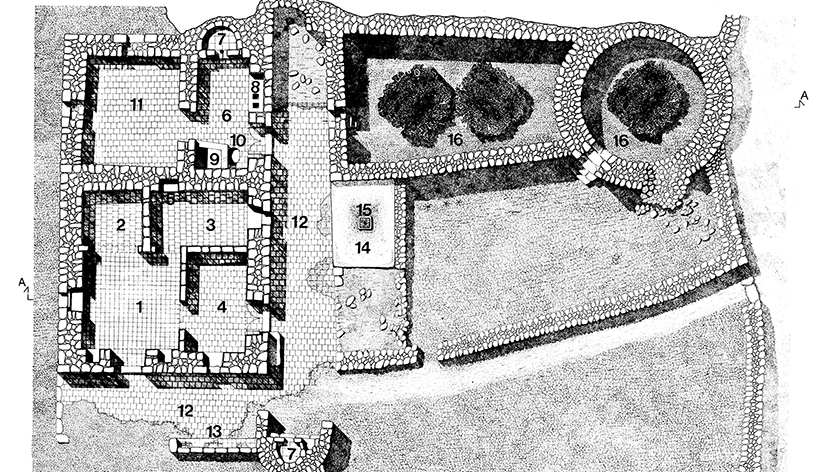Nature and Artificiality: in Search of a lost Harmony
DOI:
https://doi.org/10.19229/2464-9309/252017Keywords:
nature, artificiality, harmonyAbstract
Maghreb’s desert, an eternal landscape of slow and irrational creation, or the Motya’s Salterns, geometrical landscape, logical and violent. Both landscapes capture our attention: the desert enhances nature, it is not susceptible to enduring changes and only works through a set of unrecognizable rules. Motya’s Salterns are an artificial product of scheduled changes, where man is the author of transformations driven by logical principles. In the past, the man-nature-territory relationship was a perfect harmony, where changes were not violent, but balanced, and distinguishing nature from artificiality was possible.
Downloads
Article Metrics Graph
References
Acocella, A. (2004), L’architettura di pietra: antichi e nuovi magisteri costruttivi, Alinea, Firenze.
Augé, M. (2004), Rovine e Macerie – Il senso del tempo, Bollati Boringhieri, Torino.
Bignardi, M. (2002), “Sulla riva di un altro Mediterraneo”, in Mediterraneo Mirò, Bianchini ed., Frosinone.
Borges, J. L. (1982), “Poema”, in La Cifra, Arnoldo Mondadori ed., Milano.
Dal Sasso, A. and Pandakovic, D. (2013), Saper vedere il paesaggio, CittàStudi, Milano.
De Giovanni, G. (2016), “La conoscenza nel processo di conservazione”, in Un percorso del fare 3 – Appunti per una cultura tecnologica, edizioni Arianna, Geraci Siculo (PA).
De Giovanni, G. (2003), “Diario di un viaggio”, in Architetturacittà n. 6, La Spezia.
Donato, S. (2008), Architettura del paesaggio di natura e d’artificio, Rubbettino, Soveria Mannelli (CZ).
Dorfles, G. (2003), Artificio e Natura, Skira, Milano.
Ghinato, A., Pansera, A. and Ruscio, R. (2011), La forma tra natura e artificio – Pensare lo spazio dell’ambiente, Aracne, Roma.
Idrisi (2008), Il libro di Ruggero, Dario Flaccovio ed., Palermo
Levi, C. (1955), Le parole sono pietre, Einaudi, Torino.
Maniglio Calcagno, A. (2006), Architettura del paesaggio. Evoluzione storica, Franco Angeli, Milano.
Persi, P. (ed.) (2007), “Recondita Armonia. Il Paesaggio tra progetto e governo del territorio. Segni, sogni e bisogni delle popolazioni locali”, in Atti III Convegno Internazionale Beni Culturali Urbino 5-7 ottobre 2006, Università di Urbino Carlo Bo, Fano.
Portoghesi, P. (1999), Natura e Architettura, Skira, Milano.
Sposito, A. (2007), “Processi formativi e tecnologia non conformista”, in Tecnologia Antica – Storie di procedimenti, tecniche e artefatti, Dario Flaccovio ed., Palermo.
Vidal de La Blache, P. (1948), Principes de la Géographie humaine, Paris.
Yourcenar, M. (1988), Memorie di Adriano, Einaudi, Torino.

Downloads
Published
How to Cite
Issue
Section
License
This Journal is published under Creative Commons Attribution Licence 4.0 (CC-BY).
License scheme | Legal code
This License allows anyone to:
Share: copy and redistribute the material in any medium or format.
Adapt: remix, transform, and build upon the material for any purpose, even commercially.
Under the following terms
Attribution: Users must give appropriate credit, provide a link to the license, and indicate if changes were made; users may do so in any reasonable manner, but not in any way that suggests the licensor endorses them or their use.
No additional restrictions: Users may not apply legal terms or technological measures that legally restrict others from doing anything the license permits.
Notices
Users do not have to comply with the license for elements of the material in the public domain or where your use is permitted by an applicable exception or limitation.
No warranties are given. The license may not give users all of the permissions necessary for their intended use. For example, other rights such as publicity, privacy, or moral rights may limit how you use the material.


















































































